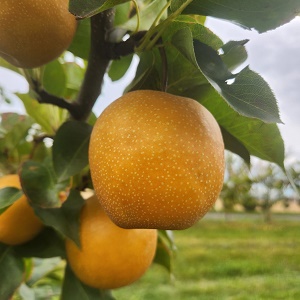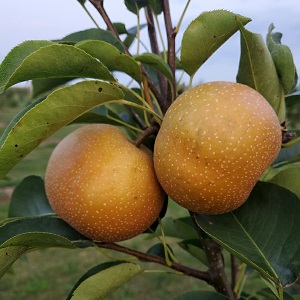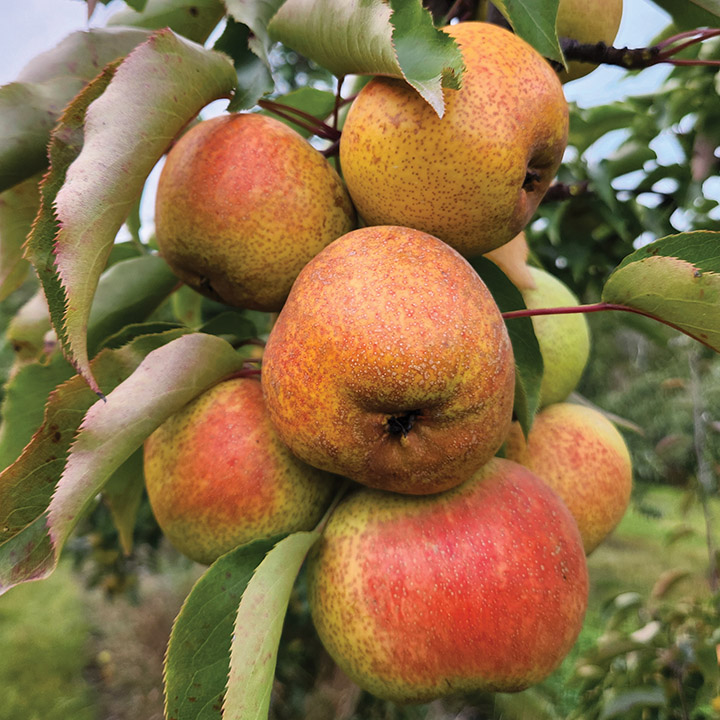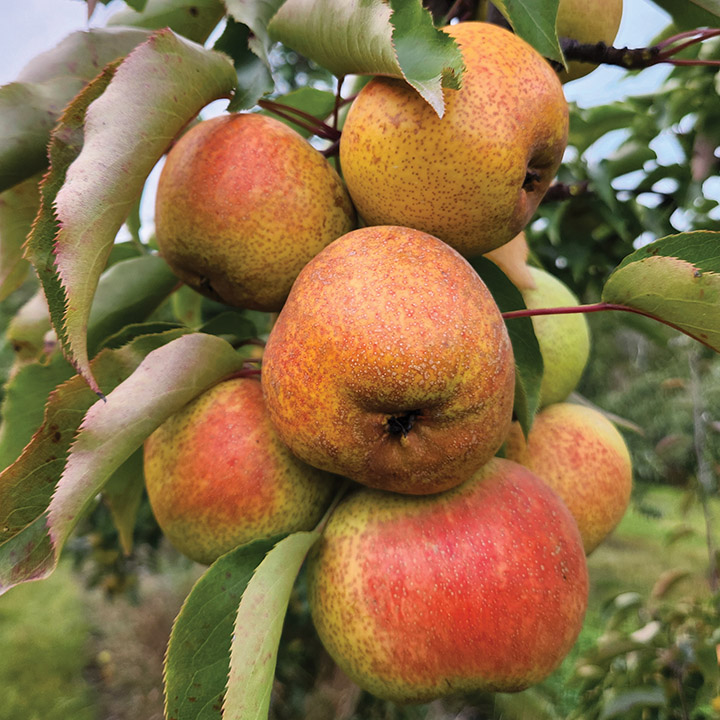Asian Pear : YOINASHI Large Semi-Dwarf (OHxF97) (Orchard Grade)
$37.95
An 'orchard grade' is a tree that may be somewhat shorter, slightly crooked, or a bit scratched, or for some other reason is not a perfect front lawn specimen. These trees will work just as well in an orchard as a first or number one would, since they still produce the very same fruit.
Yoinashi means "good pear" in Japanese. It is considered one of the more cold hardy Asians. Sweet, richly aromatic flesh with flavour that has been described as "having a little bit of zip". Excellent quality, large, orange brown fruit is crisp and finer-textured than most asian pears. Upright growing tree is resistant to both Pseudomones disease and fireblight.
SEMI-FERTILE* | ZONE 4/5 | HARVEST: EARLY-MID OCT.
3 reviews for Asian Pear : YOINASHI Large Semi-Dwarf (OHxF97) (Orchard Grade)
Only logged in customers who have purchased this product may leave a review.
Growing Tips
Asian Pears are very precocious which means they tend to produce quite heavily when only a few years old. This can result in a weakened tree as all its energy is going into producing fruit instead of forming a sturdy tree. For this reason we recommend removing most of the fruit for the first several years.
All European (regular) and Asian pears will pollinate each other providing their bloom times overlap. Generally you can go by the expected harvest time, meaning only the very early and the very late might not be compatible with each other. However, since Asian pears, on average, bloom earlier than Europeans, you might pair an early European with a mid or late Asian.




michael rossy (verified owner) –
John Forest (verified owner) –
JAMES PATCH (verified owner) –